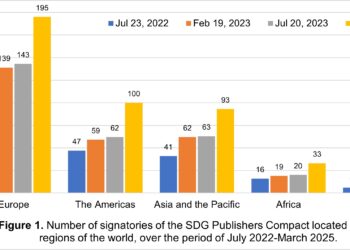This week marks the golden anniversary of the Science Citation Index, introduced by Eugene Garfield in 1964. The ability to track the progress of science, and the influence each work had on subsequent works revolutionized our understanding of the scientific process. While the latter day descendants of Garfield’s work are often the subject of criticism due to widespread misuse, the tools themselves remain invaluable methods for making sense of the state of research.
Below, find an interview with Eugene Garfield, looking back over the history of the Index, including its technological changes over the years, from punchcards to CD-ROM to the web.
Better yet, skip the review article and go back to the original works, a 1967 promotional film on how to use the SCI, Part 1:
Part 2:
Part 3:
Discussion
6 Thoughts on "Happy Anniversary: 50 Years of the Science Citation Index"
This seems like a good time to tell Gene Garfield stories. A few years back I recruited a team to use a contagion model to look at the diffusion of scientific knowledge. I mentioned this to Garfield after the initial work was done and he pointed out that he had called for just such a study in the 1980s. So I felt like we were just catching up to him.
But the irony is that we included his paper in our citations even though we had not heard of it when we did the work. Citation and influence are not necessarily the same thing. Influence is much more subtle and complex. Diffusion is not trackable. But citation is still very important. I once told Garfield that he should get a Nobel prize, the question is which one?
One of the most important parts Dr. Garfield’s contribution is often overlooked. Gene realized that the process of manual indexing to be inevitably limited, and subject to decay. We can only attach descriptors that are consistent with what we know at the moment about the object (article) at hand. Citation – use by other researchers – was a way to continuously update the descriptive indexing of an article.
In effect, a published work acquires meaning as it is used, expanded upon, modified, or even overturned by others.
This was the radical insight – to engage the entire scholarly enterprise in describing the nature of research and knowledge – all as a part of their current work-flow. Read, think, write, publish – every citation in that final step is a highly specific point-to-point connection between documents created by an expert in the field. This creates a powerful map of published knowledge – not all of knowledge, and there are many things now that are evolving around capturing less formal parts of the interaction with an idea – but the formal literature is a valuable thing as a
Gene, it has been a personal pleasure to work with you over the years – for your guidance, insight and continuous challenge. Congratulations on this milestone!
On a light note: thanks for posting those vintage promo videos for the SCI! They’re fun to watch. 🙂
Dr, Garfield and SCI changed the way lots of folks thought about organizing, indexing, and retrieval. And all with residual data that allowed for the study of scholarly communication. Not many have accomplished as much!




